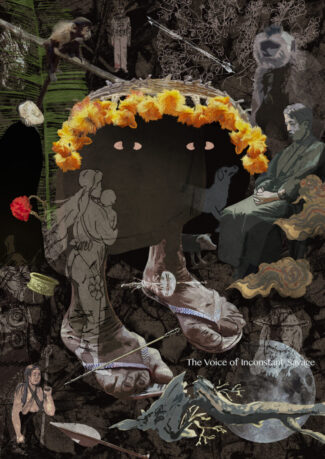[Commissioned Work]
This multifaceted, polyphonic and immersive sound installation by Yasuhiro Morinaga establishes a historical encounter between Portuguese culture and Japan, memories and myths that remain and coexist with other cultures of the Amazon.
Commissioned for the Engawa – Japanese Contemporary Art Season programme , The Voice of Inconstant (2023) is an immersive installation that superimposes a prayer inspired by the story of a 16th-century Portuguese missionary, a chant from a Kakure-Kirishitan (hidden Christians) prayer – a religion rooted in Nagasaki Prefecture –, a chant from the Karawara spirits of the Awá indigenous people – who live in the Amazon rainforest – and a chorus of Western Gregorian chant. Morinaga questions the position of the aesthetics of inconstancy in relation to the discourse of the “savage” that modern society confronts.










